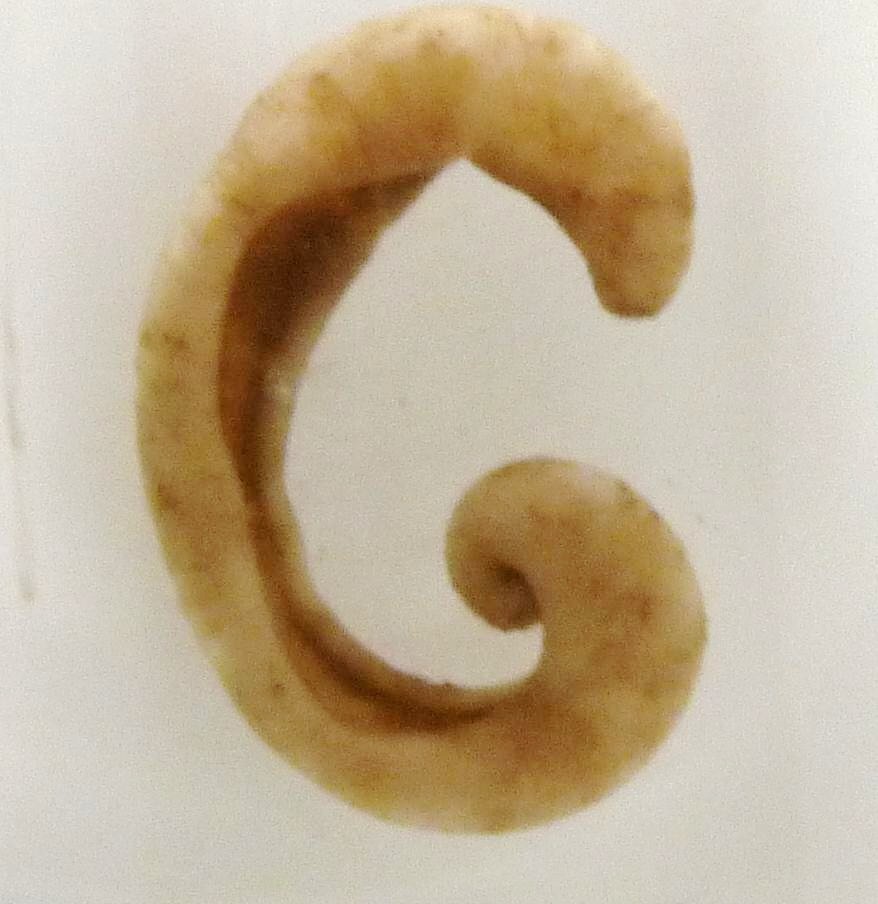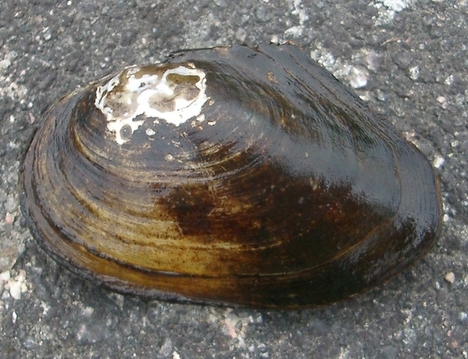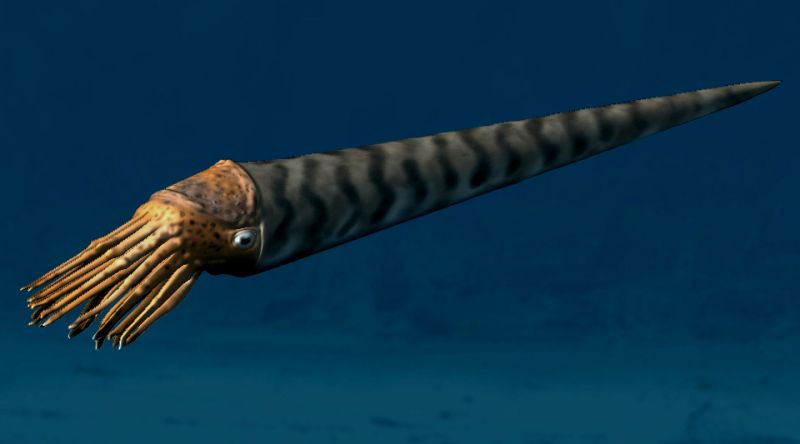List of mollusc orders on:
[Wikipedia]
[Google]
[Amazon]
 List of mollusc orders illustrates the 97 orders in the phylum
List of mollusc orders illustrates the 97 orders in the phylum
Numbers of Living Species in Australia and the World, 2nd edition
Australian Biological Resources Study, Canberra. Retrieved 12 January 2010. (printed); (online). making up 23% of described marine organisms.


 * Superfamily Arcticoidea
* Superfamily
* Superfamily Arcticoidea
* Superfamily
 * Superfamily Trigonioidea
* Superfamily
* Superfamily Trigonioidea
* Superfamily
 * Superfamily Anomioidea
* Superfamily Arcoidea
* Superfamily
* Superfamily Anomioidea
* Superfamily Arcoidea
* Superfamily
Mollusca
Mollusca is the second-largest phylum of invertebrate animals after the Arthropoda, the members of which are known as molluscs or mollusks (). Around 85,000 extant species of molluscs are recognized. The number of fossil species is esti ...
, the largest marine animal phylum. 85,000 extant species are described,Chapman, A.D. (2009)Numbers of Living Species in Australia and the World, 2nd edition
Australian Biological Resources Study, Canberra. Retrieved 12 January 2010. (printed); (online). making up 23% of described marine organisms.
Class Aplacophora

Subclass
Caudofoveata
Caudofoveata is a small class within the phylum Mollusca, also known as Chaetodermomorpha. The class is often combined with Solenogastres and termed Aplacophora, but some studies have cast doubt on the monophyly of this group.
Anatomy
Caudofo ...
No orders, 6 families, 15 genera, 150 species.
Subclass Solenogastres
* Order Neomeniamorpha * OrderPholidoskepia
The Pholidoskepia are one of the three orders of solenogaster.
It is considered an alternate representation for the class Solenogastres. MolluscaBase eds. (2021). MolluscaBase. Pholidoskepia. Accessed through: World Register of Marine Species at ...
Testaria (unranked)
Class Polyplacophora (
Chiton
Chitons () are marine molluscs of varying size in the class Polyplacophora (), formerly known as Amphineura. About 940 extant and 430 fossil species are recognized.
They are also sometimes known as gumboots or sea cradles or coat-of-mail s ...
s)
* Order Multiplacophora
Multiplacophora is a stem-group of chitons with a number of plates arranged in 7 rows along the body. They date to at least the Upper Cambrian, but two lower Cambrian fossils- ''Ocruranus'' and ''Trachyplax'' - may extend the range downwards.
F ...
†
* Order Neoloricata
* Order Paleoloricata
The Paleoloricata are valved polyplacophora without sutural laminae or insertion plates (as found in the neoloricata). The "order" probably represents a paraphyletic grouping.
References
Prehistoric chitons
Mollusc orders
Cambrian mollusc ...
†
Subphylum
Conchifera
Conchifera is a subphylum of the phylum Mollusca. It comprises all of the shell-bearing classes of molluscs, such as clams, tusk shells, ammonites, and monoplacophorans. The other subphylum is Aculifera.
Non-monoplacophoran conchiferans emerged ...
Class Bivalvia
= Subclass Heterodonta
=
Cardioidea
Cardioidea is a taxonomic superfamily of saltwater clams, marine bivalve molluscs consisting of the extant Cardiidae (cockles) and the extinct Pterocardiidae.
Taxonomy
These families are assigned to Cardioidea:
*Family: Cardiidae Lamarck, ...
* Superfamily Chamoidea
* Superfamily Clavagelloidea
* Superfamily Crassatelloidea
Crassatelloidea is a superfamily of bivalves in the order Carditida. In the World Register of Marine Species (WoRMS), Astartoidea is considered a junior synonym of Crassatelloidea, whereas in ITIS Astartoidea is a separate family containing Ast ...
* Superfamily Cuspidarioidea
Anomalodesmata is an superorder of saltwater clams, marine bivalve molluscs. This grouping was formerly recognised as a taxonomic subclass. It is called a superorder in the current World Register of Marine Species, despite having no orders, t ...
* Superfamily Hippuritoida †
* Superfamily Cyamioidea
* Superfamily Cyrenoidea
* Superfamily Cyrenoidoidea
* Superfamily Dreissenoidea
* Superfamily Galeommatoidea
* Superfamily Gastrochaenoidea
Gastrochaenidae is a taxonomic family of saltwater clams, marine bivalve molluscs
Mollusca is the second-largest phylum of invertebrate animals after the Arthropoda, the members of which are known as molluscs or mollusks (). Around 85,0 ...
* Superfamily Glossoidea
* Superfamily Hemidonacoidea
* Superfamily Hiatelloidea
* Superfamily Limoidea
The Limidae or file shells are members of the only family (biology), family of bivalve molluscs in the order (biology), order Limida. The family includes 130 living species, assigned to 10 genera. Widely distributed in all seas from shallow to de ...
* Superfamily Lucinoidea
* Superfamily Mactroidea
* Superfamily Myoidea
* Superfamily Pandoroidea
* Superfamily Pholadoidea
* Superfamily Pholadomyoidea
* Superfamily Solenoidea
* Superfamily Sphaerioidea
* Superfamily Tellinoidea
Tellinoidea is a taxonomic superfamily of saltwater clams, marine bivalve molluscs in the order Cardiida.
Families
These families are assigned to Tellinoidea:
*Donacidae Fleming, 1828
*Psammobiidae Fleming, 1828
*Semelidae Stoliczka, 1870 (1825) ...
* Superfamily Thyasiroidea
* Superfamily Ungulinoidea
* Superfamily Veneroidea
* Superfamily Verticordioidea
= Subclass Palaeoheterodonta
= * Superfamily Trigonioidea
* Superfamily
* Superfamily Trigonioidea
* Superfamily Unionoidea
Unionida is a monophyletic order of freshwater mussels, aquatic bivalve molluscs.Bieler R., Carter J.G. & Coan E.V. (2010). ''Classification of Bivalve families''. pp. 113–133, in: Bouchet P. & Rocroi J.-P. (2010), ''Nomenclator of Bivalv ...
= Subclass Protobranchia
= * Superfamily Manzanelloidea * Superfamily Nuculanoidea * SuperfamilyNuculoidea
Nuculoidea is a superfamily of bivalves. It belongs to the order Nuculida. It comprises one living family, Nuculidae and one extinct family Praenuculidae
Praenuculidae is an extinct family of prehistoric bivalves in the superfamily Nuculoid ...
* Superfamily Sapretoidea
* Superfamily Solemyoidea
= Subclass Pteriomorphia
= * Superfamily Anomioidea
* Superfamily Arcoidea
* Superfamily
* Superfamily Anomioidea
* Superfamily Arcoidea
* Superfamily Dimyoidea
Dimyidae is a family of extremely flattened, small (<1 cm), pleurothetic, relatively rare marine
 * Order
* Order
 * Order
* Order
 *Superorder Decapodiformes
** Order Boletzkyida †
** Order Spirulida ram's horn squid
** Order
*Superorder Decapodiformes
** Order Boletzkyida †
** Order Spirulida ram's horn squid
** Order
 Subclass
Subclass  Superorder Neritaemorphi Koken, 1896
* Order Cyrtoneritomorpha (''fossil'')
* Order Neritopsina Cox & Knight, 1960
Superorder
Superorder Neritaemorphi Koken, 1896
* Order Cyrtoneritomorpha (''fossil'')
* Order Neritopsina Cox & Knight, 1960
Superorder
 *Order Dentaliida
*Order
*Order Dentaliida
*Order
Limoidea
The Limidae or file shells are members of the only family (biology), family of bivalve molluscs in the order (biology), order Limida. The family includes 130 living species, assigned to 10 genera. Widely distributed in all seas from shallow to de ...
* Superfamily Mytiloidea
Mytiloidea are a superfamily of small to large saltwater mussels, marine bivalve molluscs in the order Mytilida.
''Mytiloidea'' contains two families, Mysideiellidae, which is known only from fossils and Mytilidae
Mytilidae are a fami ...
* Superfamily Ostreoidea
* Superfamily Pectinoidea
* Superfamily Pinnoidea
The Pinnidae are a taxonomic family of large saltwater clams sometimes known as pen shells. They are marine bivalve molluscs in the order Pteriida.
Shell description
The shells of bivalves in this family are fragile and have a long and tria ...
* Superfamily Plicatuloidea
* Superfamily Pterioidea
Pterioidea is a superfamily of epifaunal marine bivalves mostly inhabiting continental shelf regions of tropical and subtropical oceans. The superfamily includes the economically-important saltwater pearl oysters as well as the oddly shaped ha ...
Class Cephalopoda
= Subclass Nautiloidea
= * Order
* Order Plectronocerida
Plectronocerida is a primitive order from which subsequent cephalopod orders are ultimately derived.Curt Teichert, 1988. Main Features of Cephalopod Evolution. The Mollusca Vol. 12 Paleontology and Neontology of Cephalopds; Academic Pres Inc.
O ...
†
* Order Ellesmerocerida
The Ellesmerocerida is an order of primitive cephalopods belonging to the subclass Nautiloidea with a widespread distribution that lived during the Late Cambrian and Ordovician.
Morphology
The Ellesmerocerida are characterized by shells that ...
†
* Order Actinocerida
The Actinocerida are an order of generally straight, medium to large cephalopods that lived during the early and middle Paleozoic, distinguished by a siphuncle composed of expanded segments that extend into the adjacent chambers, in which deposit ...
†
* Order Pseudorthocerida
Pseudorthocerida is an order of generally straight longiconic orthoceratoids with a subcentral to marginal cyrtochoanitic siphuncle composed of variably expanded segments which may contain internal deposits that may develop into a continuous p ...
†
* Order Ascocerida
The Ascocerida are comparatively small, bizarre Orthoceratoids known only from Ordovician and Silurian sediments in Europe and North America, uniquely characterized by a deciduous conch consisting of a longiconic juvenile portion and an inflate ...
†
* Order Endocerida
Endocerida is an extinct nautiloid order, a group of cephalopods from the Lower Paleozoic with cone-like deposits in their siphuncle. Endocerida was a diverse group of cephalopods that lived from the Early Ordovician possibly to the Late Silu ...
†
* Order Tarphycerida †
* Order Oncocerida
The Oncocerida comprise a diverse group of generally small nautiloid cephalopods known from the Middle Ordovician to the Mississippian (early Carboniferous; one possible member is known from the Early Permian), in which the connecting rings are t ...
†
* Order Discosorida
Discosorida are an order of cephalopods that lived from the beginning of the Middle Ordovician, through the Silurian, and into the Devonian. Discosorids are unique in the structure and formation of the siphuncle, the tube that runs through an ...
†
* Order Nautilida
* Order Orthocerida
Orthocerida is an order of extinct Orthoceratoid cephalopods also known as the Michelinocerida that lived from the Early Ordovician () possibly to the Late Triassic (). A fossil found in the Caucasus suggests they may even have survived until ...
†
* Order Lituitida
Lituitida is an order of orthoceratoid cephalopods. They correspond to the family Lituitidae of the Treatise (Furnish & Glenister, 1964), reranked as an order and combined with other orthoceratoids. They are considered to be more closely relate ...
†
* Order Dissidocerida
Dissidocerida is an order of Early Ordovician to the Early Silurian orthoceratoid cephalopods in which the siphuncle has a continuous lining or a longitudinal rod-like structure within.
The order Dissidocerida was proposed by Zhuravleva (1994) ...
†
* Order Bactritida
The Bactritida are a small order of more or less straight-shelled (orthoconic) cephalopods that first appeared during the Emsian stage of the Devonian period (407 million years ago) with questionable origins in Pragian stage before 409 million ye ...
†
= Subclass
Ammonoidea
Ammonoids are a group of extinct marine mollusc animals in the subclass Ammonoidea of the class Cephalopoda. These molluscs, commonly referred to as ammonites, are more closely related to living coleoids (i.e., octopuses, squid and cuttle ...
† =
 * Order
* Order Goniatitida
Goniatids, informally goniatites, are Ammonoidea, ammonoid cephalopods that form the order Goniatitida, derived from the more primitive Agoniatitida during the Middle Devonian some 390 million years ago (around Eifelian stage). Goniatites (goniat ...
†
* Order Prolecanitida †
* Order Ceratitida
Ceratitida is an order that contains almost all ammonoid cephalopod genera from the Triassic as well as ancestral forms from the Upper Permian, the exception being the phylloceratids which gave rise to the great diversity of post Triassic ammoni ...
†
* Order Ammonitida †
Subclass Coleoidea
= Division Belemnitida
= * Order Belemnoidea † * Order Aulacocerida † * Order Phragmoteuthida † * Order Donovaniconida † * Order Belemnitida † * Order Hematitida †= Division Neocoleoidea (most living cephalopods)
= *Superorder Decapodiformes
** Order Boletzkyida †
** Order Spirulida ram's horn squid
** Order
*Superorder Decapodiformes
** Order Boletzkyida †
** Order Spirulida ram's horn squid
** Order Sepiida
Cuttlefish or cuttles are marine molluscs of the order Sepiida. They belong to the class Cephalopoda which also includes squid, octopuses, and nautiluses. Cuttlefish have a unique internal shell, the cuttlebone, which is used for control of bu ...
cuttlefish
** Order Sepiolida bobtail squid
** Order Teuthida squid
*Superorder Octopodiformes
** Order Vampyromorphida vampire squid
** Order Octopoda octopus
Class
Gastropoda
The gastropods (), commonly known as snails and slugs, belong to a large taxonomic class of invertebrates within the phylum Mollusca called Gastropoda ().
This class comprises snails and slugs from saltwater, from freshwater, and from land. ...
This overview of orders follows the taxonomy of the Gastropoda (Ponder & Lindberg, 1997):
* Order Bellerophontinaka (''fossil'')
* Order Mimospirina (''fossil'')
Subclass Eogastropoda
Eogastropoda was a previously used taxonomic category of snails or gastropods, a subclass which was erected by Ponder and Lindberg in 1997. It was one of two great divisions (subclasses) of the class Gastropoda, the snails. The other subclass of ...
*Order Euomphalida de Koninck 1881 (''fossil'')
* Order Patellogastropoda Lindberg, 1986 (true limpets)
Orthogastropoda
Orthogastropoda was a major taxonomic grouping of snails and slugs, an extremely large subclass within the huge class Gastropoda according to the older taxonomy of the Gastropoda (Ponder & Lindberg, 1997).
This taxon is no longer used accordin ...
Ponder & David R. Lindberg
David R. Lindberg (1948, U.S.A.) is an American malacologist and professor of integrative biology at the University of California, Berkeley. He is also the Curator for the University of California Museum of Paleontology and co-editor of the journ ...
, 1996
* Order Murchisoniina Cox & Knight, 1960 (''fossil'')
* Order Neomphaloida Sitnikova & Starobogatov, 1983
Superorder Vetigastropoda Salvini-Plawen, 1989 (limpets)
Caenogastropoda
Caenogastropoda is a taxonomic clade, a large diverse group which are mostly sea snails and other marine gastropod mollusks, but also includes some freshwater snails and some land snails. The clade is the most diverse and ecologically successfu ...
Cox, 1960
* Order Architaenioglossa
Architaenioglossa is a taxonomic group of snails which have gills and often an operculum. They are primarily land and freshwater gastropod mollusks within the clade Caenogastropoda.
This " informal group" has been shown to be polyphyletic in a s ...
Haller, 1890
* Order Sorbeoconcha
Sorbeoconcha is a taxonomic clade of snails, i.e. gastropods, mainly marine species with gills and opercula, within the clade Caenogastropoda.
The taxon Sorbeoconcha was named by Winston Ponder and David R. Lindberg in 1997.
Taxonomy
1 ...
Ponder & David R. Lindberg
David R. Lindberg (1948, U.S.A.) is an American malacologist and professor of integrative biology at the University of California, Berkeley. He is also the Curator for the University of California Museum of Paleontology and co-editor of the journ ...
, 1997
** Infraorder Littorinimorpha Golikov & Starobogatov, 1975
** Infraorder Ptenoglossa
The Ptenoglossa is an informal taxonomic group of sea snails.
This group was considered paraphyletic or polyphyletic by Ponder and Lindberg (1997) in their classification of gastropod molluscs.
The database WoRMS considers this suborder as b ...
J.E. Gray, 1853
** Infraorder Neogastropoda
Neogastropoda is an order of sea snails, both freshwater and marine gastropod molluscs.
Description
The available fossil record of Neogastropoda is relatively complete, and supports a widely accepted evolutionary scenario of an Early Creta ...
Thiele Thiele is a German-language surname.
Geographical distribution
As of 2014, 78.0% of all known bearers of the surname ''Thiele'' were residents of Germany, 10.9% of the United States, 2.3% of Australia, 2.0% of Brazil, 1.0% of Canada and 1.0% of Sou ...
, 1929
Superorder Heterobranchia J.E. Gray
John Edward Gray, FRS (12 February 1800 – 7 March 1875) was a British zoologist. He was the elder brother of zoologist George Robert Gray and son of the pharmacologist and botanist Samuel Frederick Gray (1766–1828). The same is used for ...
, 1840
* Order Heterostropha P. Fischer, 1885
* Order Opisthobranchia
Opisthobranchs () is now an informal name for a large and diverse group of specialized complex gastropods which used to be united in the subclass Opisthobranchia. That taxon is no longer considered to represent a monophyletic grouping.
Euopisth ...
Milne-Edwards Milne-Edwards is a surname. Notable people with the surname include:
* Henri Milne-Edwards (1800–1885), French zoologist
* Alphonse Milne-Edwards (1835–1900), French ornithologist and carcinologist, a son of Henri Milne-Edwards See also
* Milne ...
, 1848
** Infraorder Euthecosomata
''Euthecosomata'' is a taxonomic unit used to classify sea snails. It is a suborder of the order Pteropoda. MolluscaBase eds. (2021). MolluscaBase. Euthecosomata. Accessed through: World Register of Marine Species at: http://www.marinespecies.org ...
** Infraorder Pseudothecosomata
Cymbulioidea is a taxonomic superfamily of pelagic " sea butterflies", one group of swimming sea snails. They are holoplanktonic opisthobranch gastropod molluscs in the clade Thecosomata.
Anatomy
Some groups within this superfamily possess a sh ...
** Infraorder Anthobranchia
The Euctenidiacea, common name dorid nudibranchs, are a Taxonomy (biology), taxonomic suborder of sea snails or sea slug, slugs, marine (ocean), marine gastropod molluscs in the order (biology), order Nudibranchia. Bouchet & Rocroi (2005) rejecte ...
Férussac, 1819
** Infraorder Cladobranchia Willan & Morton, 1984
** Suborder Eupulmonata
Eupulmonata is a taxonomic clade of air-breathing snails. The great majority of this group are land snails and slugs, but some are marine and some are saltmarsh snails that can tolerate salty conditions.
Linnean taxonomy
*Suborder Eupulmonat ...
Haszprunar & Huber, 1990
*** Infraorder Acteophila Dall, 1885 (= formerly Archaeopulmonata)
Class
Monoplacophora
Monoplacophora , meaning "bearing one plate", is a polyphyletic superclass of molluscs with a cap-like shell inhabiting deep sea environments . Extant representatives were not recognized as such until 1952; previously they were known only from ...
*Order Tryblidiida
Class Rostroconchia †
No information available below classClass Scaphopoda ( Tusk shells)
 *Order Dentaliida
*Order
*Order Dentaliida
*Order Gadilida
Gadilida is an order of very small tusk shells, marine scaphopod molluscs.
The species within the Gadilida are usually very much smaller than those within the other order of scaphopods, the Dentaliida.
Families
Families within the order Gadi ...
See also
* 2010 Bivalvia taxonomy * Taxonomy of the Gastropoda (Bouchet & Rocroi, 2005) * Taxonomy of the Gastropoda (Bouchet et al., 2017) * Taxonomy of the Gastropoda (Ponder & Lindberg, 1997) * Taxonomy of the Conoidea (Tucker & Tenorio, 2009)References
Orders
Order, ORDER or Orders may refer to:
* Categorization, the process in which ideas and objects are recognized, differentiated, and understood
* Heterarchy, a system of organization wherein the elements have the potential to be ranked a number of d ...
Taxonomic lists (orders)